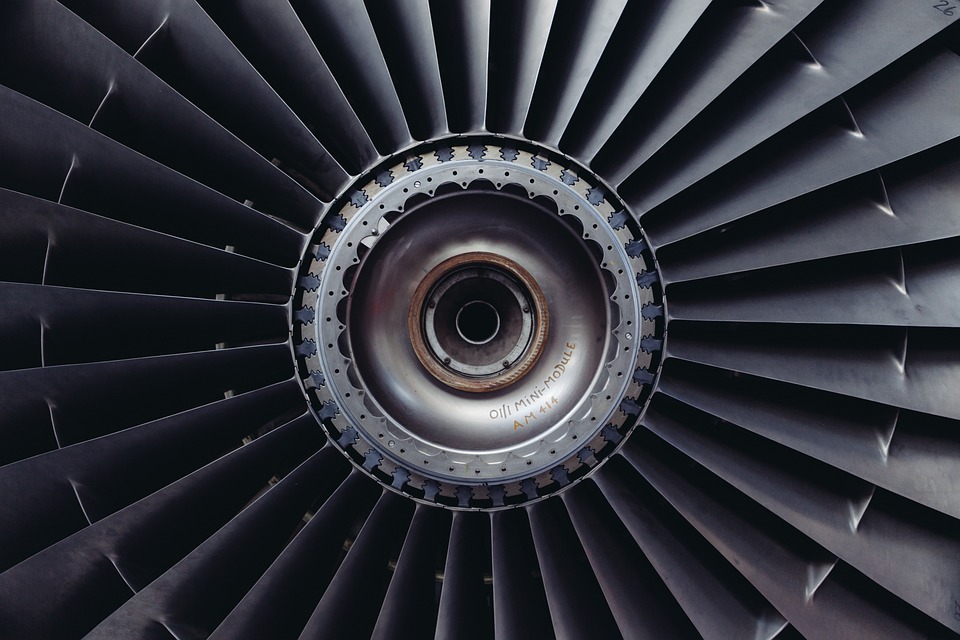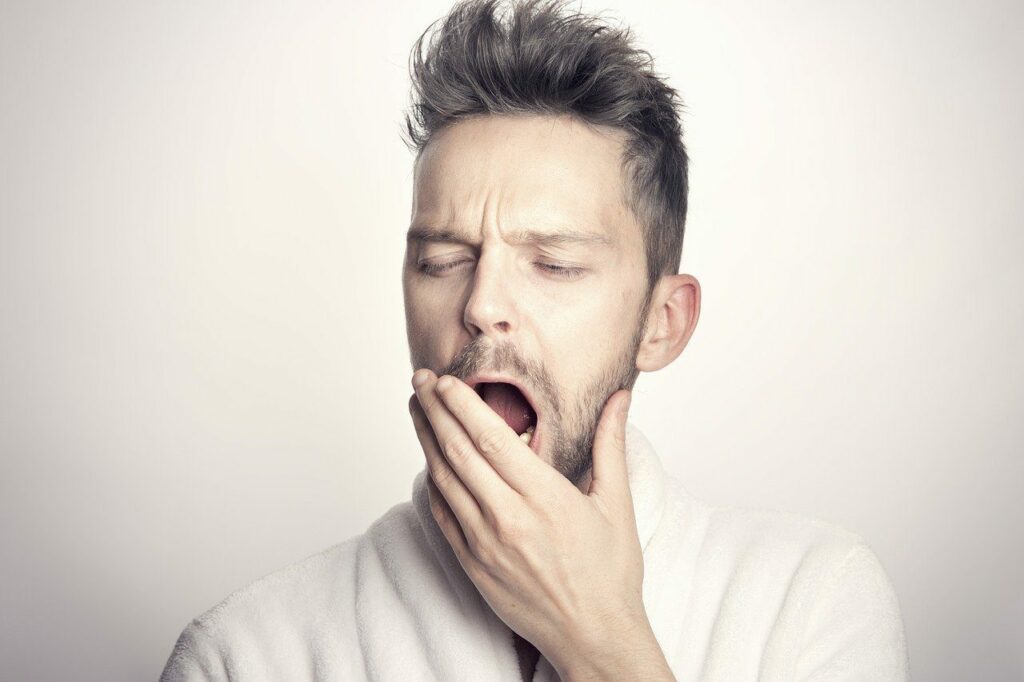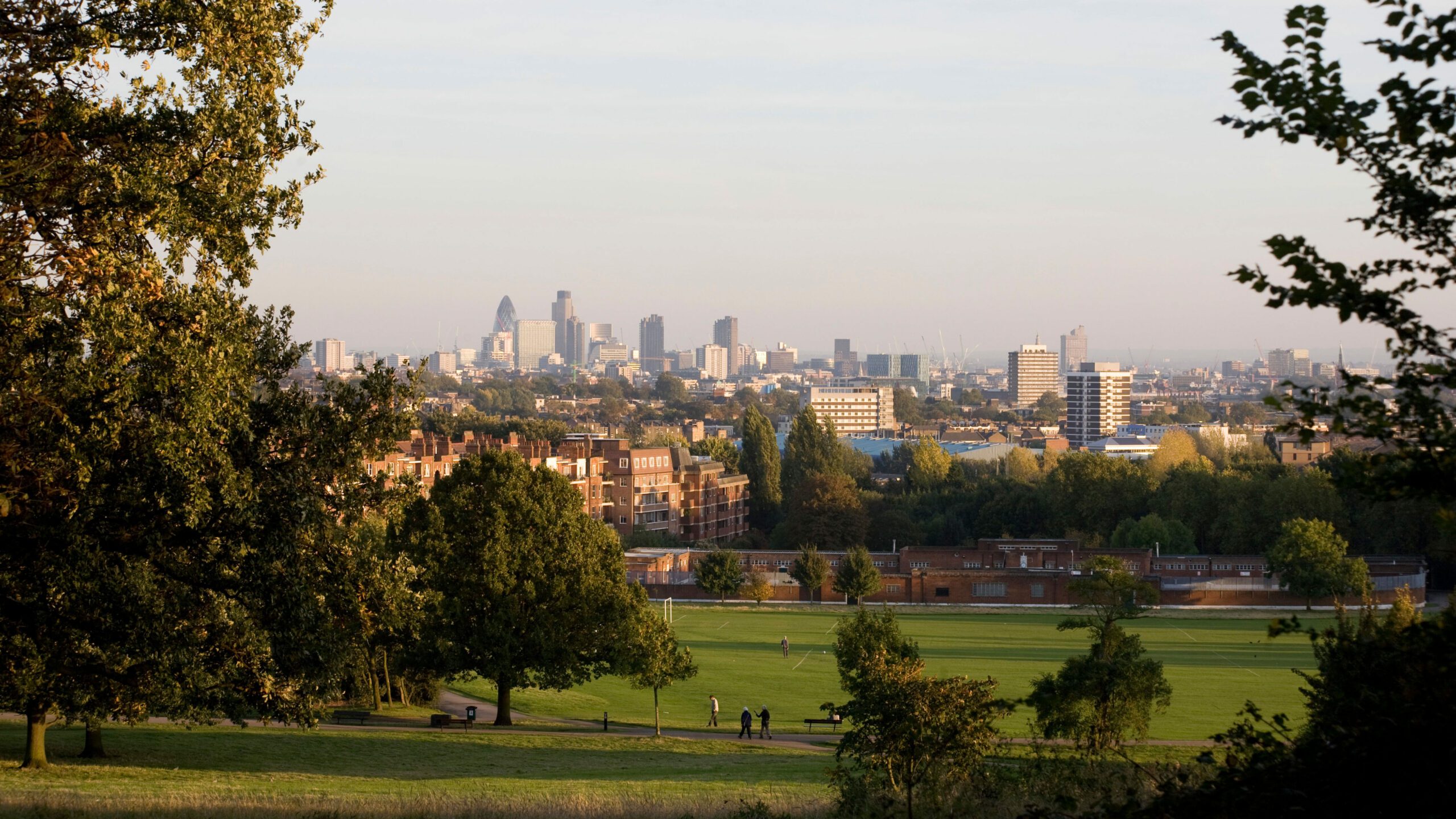But how did we reach here? Are you too responsible for this? What happens if it continues this way? And finally, what can you do? We’ll be answering all these questions and more in this post. We’ll look at noise pollution, its effects and discuss possible solutions in-depth. So, let’s begin.
What is Considered Noise?
Noise is a part of our everyday lives. Whether it be from a plane flying over your head, someone revving their car on the street, or a loud machine at your workplace. Today, everyone is subjected to noise at some level. And there’s virtually no way of escaping from it.
Noise is a type of sound that one would categorize as annoying, unwanted, loud, and unpleasant to the ears.
We measure the volume of sound with units called decibels (dB). The higher the decibel, the louder the noise.
Humans can tolerate around 120 dB (decibels) of sound for a short time. That’s the level of sound you’d hear in modern rock concerts.
But usually, 70 dB or below is where our biology draws the line. If you’re exposed to sounds over 70 dB for a prolonged period, you may begin to suffer some level of hearing damage.
So, basically, we can consider any sound over 70 dB to be “noise pollution.” And the problem is, in today’s world, we are all frequently exposed to sounds above this threshold, which can cause several problems.
What’s creating that noise?
What Creates Noise Pollution?
There are a lot of things that create noise pollution. But here are some of the common ones.
Traffic
Traffic noise accounts for most of the polluting noise, especially in cities. A single car horn produces 90 dB of sound, whereas a bus produces around 100 dB.
But, in some time, experts believe this problem will mitigate a bit, as electric vehicles are taking over combustion engines. And those produce virtually no sound. So, if electric vehicles become a norm, most of the noise pollution that comes from traffic (not including car horns) will vanish.
Air traffic noise
Even though much fewer aircrafts are flying over cities than there are vehicles on the road, airplanes’ impact is significantly higher.
Testing shows that a single aircraft produces around 130 dB of noise on the ground.
Construction Sites
We all have tossed and turned in bed because of the noise coming from a nearby construction site.
From car park and building constructions to pavement and road resurfacing, these works produce harsh and loud noises. And I don’t think it will be surprising for you to know that a pneumatic drill alone has 110 dB of noise.
Catering and Night Life
We don’t think much about it, but restaurants, bars, and terraces can produce around 100 dB of sound. That’s why it can be so difficult to hear the people you’re with, and why you so frequently find yourself yelling to your companions over dinner or drinks.
And More…
Noise pollution doesn’t just limit to the situations I mentioned above. For example, oftentimes, we don’t even consider animals to contribute to noise pollution. A barking or howling dog can easily produce around 60-80 dB of sound.
Besides this, there are:
- Workplace sounds, which is more intense if it’s in an open space
- Commercial venues that play loud music constantly
- Industrial sounds like generators, fans, mills, and compressors
- Trains
- Household sounds, like vacuum cleaners, coolers, fans, washing machines, dishwashers, and lawnmowers.
- And finally, there are events involving firecrackers, fireworks, and loudspeakers.
Noises on a Personal Level
Besides the ones I mentioned above, there are a few noises that technically don’t qualify as noise pollution, still, they have a significant impact on your health. I am referring to quieter noises in our everyday life that don’t bother a whole neighborhood, but it does to an individual. Here’s what I mean.
Volume of Movies & TV shows
Have you ever noticed that the effects and music are significantly louder than the dialogues in movies and TV shows?
This happens because movies are made with HDR (high dynamic range) sound, which contains audio in different ranges to induce certain emotions. And this is really good for theaters.
In theaters, you get decent acoustics and a nice quiet environment where you can hear even whispers clearly. Combining this kind of environment with HDR sound design works flawlessly even in a lower and consistent volume.
But when you watch the same movie at home, you’re competing with open windows, air conditioners, or other people talking in the same room. Besides that, the rooms in homes are also not designed to keep acoustics and noise reduction in mind.
Because of that, you have to turn the volume up to a level where you can hear the dialogues. But when it comes to music and sound effects, they become simply too loud, causing irritation in your ears.
And this is not only with movies. TV shows also use the same HDR sound design and editing format. And that makes sense because if they don’t use this design, it will cost the makers a large sum of extra money to create entirely separate LDR (low dynamic range) audio sequences.
However, while it makes sense for the filmmakers, it’s not exactly good for the end consumer.
Constant Use of Headphones
Experts say that you should never listen to headphones with the volume turned up past 60% of the maximum and for more than 60 minutes. They call it the 60/60 rule.
But today, it’s common for teenagers and young adults to listen to their headphones at full volume for a long time. According to one 2022 meta-analysis, unsafe listening practices are highly prevalent worldwide and may place over 1 billion young people at risk of hearing loss.
“We estimated that 0.67 to 1.35 billion individuals aged 12-34 years worldwide likely engage in unsafe listening practices,” lead study author and WHO consultant Lauren Dillard told CNN.
The CDC (Centers for Disease Control and Prevention) also limits safe occupational noise levels at a time-weighted average of 85 decibels over a span of 40 hours a week. For reference, headphones and earbuds at 100% volume can reach as loud as 100 dB or more.
Headphones are a huge source of noise exposure, and many people tend to keep their audio on at high volumes and wear their headphones for a long time. This can result in a number of problems, including permanent loss of hearing.
Young People Are at Risk of Permanent Hearing Loss
Listening to music on full blast is super exciting – trust me, I get it. Each beat vibrating in your ears, absorbing every melody, feeling each word – just crank it up, and the world is yours to experience. But at what cost?
Reports say that more than 1 billion young people are at risk of developing permanent hearing loss because of this unsafe practice.
“We estimated that 0.67 to 1.35 billion individuals aged 12-34 years worldwide likely engage in unsafe listening practices,” WHO consultant Lauren Dillard told CNN.
So, how do you protect yourself?
Well, the ideal way would be to avoid loud sounds at all costs. This would mean not attending loud concerts, avoiding noisy environments, and so on.
But is it realistic to go cold turkey on noises? Well, probably not, at least for a lot of people.
So, what’s the solution? Simple, start small. There’s a setting on your phone that you can turn on to limit loud noises when you’re on headphones. This is turned on by default in most Android and iPhones. But if not, you can quickly turn this on in your settings. Here’s how.
iPhone: Settings >> Sounds & Haptics >> Headphone Safety >> Reduce Loud Sounds (Enabled)
Android: Settings >> Sound >> Volumes >> Safe Headset Volume (Check)
You’ll still have control. It won’t limit your volume but will show you a warning message if your audio is too loud.
Airpods Allegedly Induced Hearing Loss in a Child: Lawsuit
In May 2022, a Texas couple filed a lawsuit against Apple Inc. alleging that the unanticipated loud volume on Apple Airpods, because of an Amber Alert, induced hearing loss in their son.
The 14-year-old boy, B.G (identified as B.G for privacy reasons), was using his Airpods to watch Netflix on his iPhone when suddenly an Amber Alert popped up.
Before this, the victim was listening to the audio on his phone at a low level. The alert suddenly raised the volume to maximum, causing a tear in one of his eardrums.
According to the medical report, B.G. had torn eardrums, damaged cochlea, and significant injuries inside his ears. These problems all developed after the incident in question.
The parents said that treatment may not be possible, and B.G. will have to wear a hearing aid for the rest of his life.
Besides the injuries, he reportedly suffered from dizziness, vertigo, nausea, and tinnitus after the incident.
“The AirPods do not automatically reduce, control, limit, or increment notification or alert volumes to a safe level,” the suit said.
This suit also includes a list of previous complaints concerning the same issue.
“Please fix this. I literally threw my AirPod across the room when I got a shrill text alert while listening to peaceful music. Not cool,” one complaint reads.
The suit said that hundreds of people are seeking a solution on Apple’s support website, and so far, there have been no actions taken on this matter.
The lawsuit is ongoing as of June 1st, 2022, and a verdict is yet to be reached.
Effects of Noise Pollution on Human Health
Constant exposure to these noises is not good for your physical and mental health.
Experts say that prolonged exposure to these noises can create several physical and mental health problems, some of which can be irreversible.
Physical Health Effects
Both direct and indirect exposure to noise pollution has severe physical health effects. And the most common one is:
Noise-Induced Hearing Loss (NIHL)
Noise-induced hearing loss occurs when the tiny hair cells in your ear suffer damage. This happens because of exposure to vibrations that loud noises create. These vibrations are so powerful that sometimes, they cause severe and permanent damage to those cells, rendering an individual completely unable to hear.
The problem with these hair cells in your ears is that they can’t regrow. In other words, the damage is permanent. So, if continuous exposure to loud noises damages these cells, they’ll ultimately lose their ability to send signals to the brain.
High Blood Pressure
Research studies say that extremely high noise pollution levels increase the stress reaction in your body. This results in an increase in your cardiac oxygen demand, because of which your heart will have to beat severely fast.
This stress reaction causes high blood pressure, which can sometimes be fatal.
Cardiovascular Diseases
Increasing amounts of noises can throw your heartbeat out of rhythm, says a research study from the Mainz University Medical Center, Germany.
This phenomenon is called atrial fibrillation. When something causes your heart to beat irregularly, it usually results in problems like stroke, blood clots, and even heart failure.
“Anything that can create agitation, irritation, or changes in blood pressure can trigger fibrillation. It’s not surprising that irritable noise, or noise in general when someone is looking for quiet, could trigger this in the cardiac system.”
Dr. Shilpi Agarwal, a preventive medicine specialist, and a board-certified family medicine physician in Washington
Sleep Disturbances
And unsurprisingly, sleep disturbance is one of the most common problems associated with noise pollution.
When you hear unwanted noises at night, it can wake you up, causing a fragmented night’s sleep. And this kind of sleep is extremely dangerous, as not only does it causes you to not feel refreshed in the morning, it can also facilitate chronic sleep deprivation.
Say that there’s a noise, which didn’t wake you up. Still, it will cause many problems as your subconscious brain is on at the time, and it will hamper your REM sleep.
Exposure to noise pollution during nighttime is also linked with extra production of hormones like cortisol and adrenaline, which causes elevated blood pressure and heart rates.
Besides that, lack of proper sleep is also linked with many mental health problems, like anxiety and depression.
Mental Health Effects of Noise Pollution
Noise pollution not only affects you physically. A fair share of its effects hit your mental health too. Have a look.
Chronic Stress
Stress is a natural response of your body to situations that threatens you physically, mentally, or socially. But, when the source of your stress is something like noise pollution, it doesn’t end after some time, unlike other sources.
This constantly keeps your brain in stress mode resulting in over-production of cortisol hormones.
When your brain suffers chronic stress, it lowers your body’s immunity to many problems like heart strokes, increased blood pressure, and other cardiovascular illnesses.
Depression & Increased Anxiety
A research group from Germany investigated the cross-sectional data of 15000 participants studied in the Gutenberg Health Study. This research aimed to find whether noise annoyance is associated with anxiety and depression.
Their investigation found that around 80% of the people who lived in annoyingly noisy areas suffer from mild to severe anxiety and depressive symptoms.
Increased Aggression
An Iranian research group conducted a survey in the Iranian automotive industry to understand if there was a correlation between prolonged noise exposure and increased aggression.
They asked 250 workers different questions from Buss and Perry’s questionnaire and measured the level of noise in their workplace.
Here’s what they said at the end of this study:
“Exposure to noise in work environment increases the incidence of tension and inappropriate behavior associated with aggression. Controlling noise through use of protective equipment might reduce the deleterious effects of noise on workers.”
This is not just applicable in industrial settings, as it’s true even for people who work at offices. As I already mentioned, noises trigger stress responses in our bodies, which also causes a significant increase in aggressive behavior.
Impaired Cognitive Development in Children
This is probably one of the most disturbing effects of noise pollution on human health. See, children’s brains are not as resistant to threats like noise pollution as adults’ brains are. Therefore, prolonged exposure to noise pollution can severely harm their cognitive development, say research studies.
This can cause the problems like:
- Speech development difficulties
- Unable to comprehend language
- Poor memory
- Poor reading ability
Besides that, noise pollution is also known to reduce the attention span in children, resulting in concentration and focus problems.
Effects of Noise Pollution on Wildlife
Humans are not the only one who suffers health problems from prolonged exposure to noise.
Studies show that the increasing noise in the environment causes difficulties like inability to communicate, find food, and navigate in various birds and animals.
But that’s not it. Besides affecting animals on the land, noise pollution also harms marine life. The sounds from oil drills, ships, sonar devices, and seismic tests have made the marine environment severely loud and chaotic. This is extremely detrimental, especially for marine mammals who use echo echolocation to navigate, communicate, find food, and mate.
Noises Off: Battle to Save Quiet Spaces
Hampstead Heath (also known as Heath locally) is a large, ancient heath, with 320 hectares (790 acres) of land, in London. Recently in 2021, the Quiet Parks International, or QPI, awarded it with the “Urban Quiet Park” status.
QPI is a “non-profit committed to saving quiet for the benefit of all life.” Their mission is to build “a world that offers quiet within and without. A world where everyone has daily access to quiet and opportunities to listen to the sounds of nature. A world where the experience of quiet nature is directly linked to inner quiet, peace and joy of being.”
The rest of the world can really take Hampstead Heath as an example of what we can do if we make an effort. Quite is necessary for our wellbeing, as well as our nature. And as QPI says, “when we save quiet, we save everything else.”
How to Reduce Noise Pollution?
“The day will come when man will have to fight noise as inexorably as cholera and the plague.”
-Robert Koch, 1905 Nobel Prize-Winning Bacteriologist
Today, noise pollution is controllable, and you can have a massive role in it. Here are some things that you can do to contribute to the battle against noise pollution.
Lower the Volume
High volume is enjoyable, I agree. But we want to be the solution to noise pollution and not a contributor. Playing stereos, radios, and TVs on high volume may seem insignificant. Still, they contribute a lot to the noise pollution in our environment. This is why, starting today, keep your volume down as much as possible.
Follow the Limits of Noise level
Governments worldwide have already set up a noise level based on scientific data. Following those limits will cause a significant decrease in noise pollution.
Go Green by Planting Trees
Did you know that the more you plant trees, the quiet the place becomes? This is because trees are good sound absorbents. Studies say that planting trees around you causes a reduction of around 5-10 dB in the noise around you.
So, start planting trees today.
Final Thoughts
Noise pollution is a growing threat, and now is the right time to do something about it. And it starts with you, an individual taking the step forward and doing the right things.
If you begin by reducing noises on a personal level, you can also convince other people to do the same. And history is a witness that collaborative effort is the key to achieving unimaginable feats.
Speaking of collaboration, noise pollution isn’t the only thing we can solve by acting together. Problems like tech waste are also proliferating in this modern world. And even though it seems like there’s nothing we can do to stop it, in reality, there is. Read my post on “E-Waste—A growing threat to the environment” for more information on tech waste, its effects, and possible solutions.












